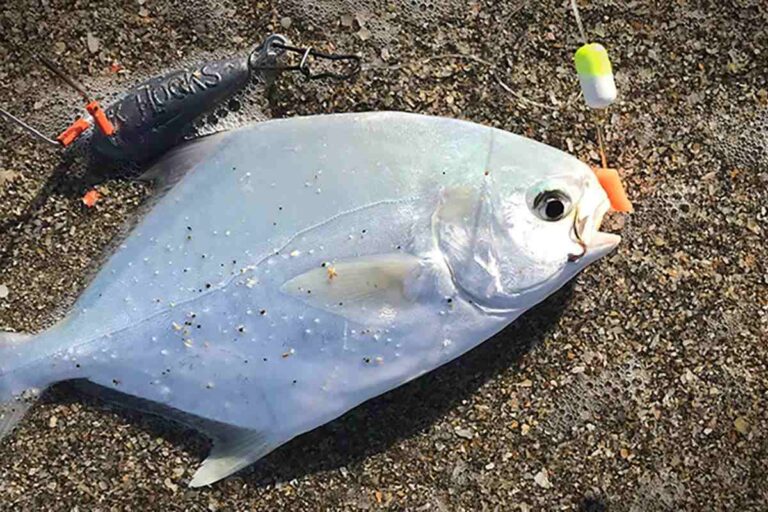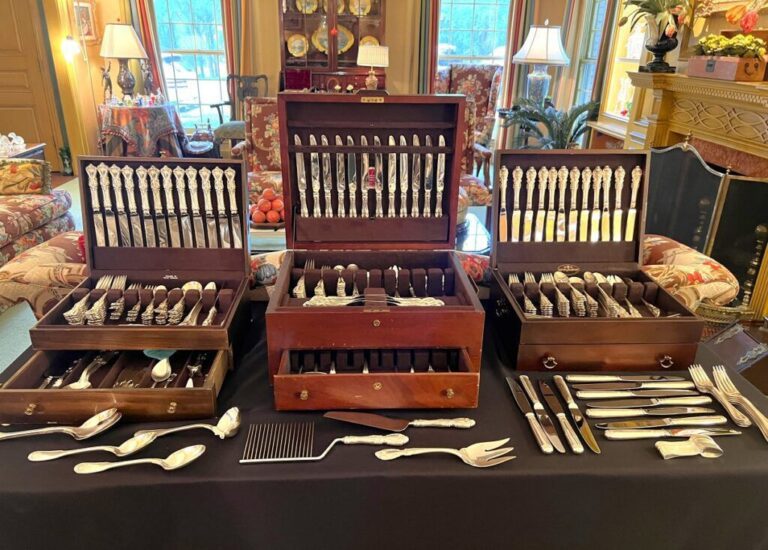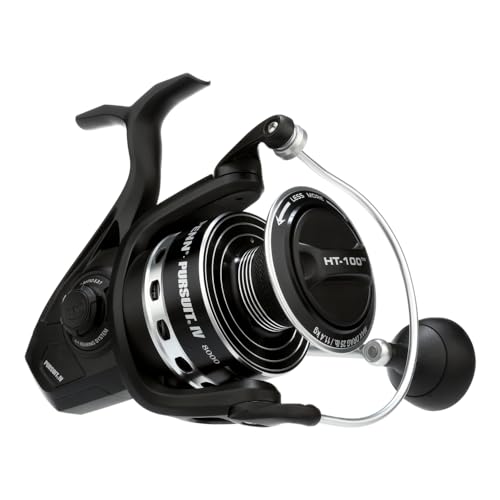A fishing planer is a device that helps to control the depth at which a fishing lure or bait is presented in the water. It works by utilizing the water resistance and hydrodynamics to allow the lure to sink to the desired depth.
Using the right equipment and techniques can greatly enhance the success of fishing. One such tool is a fishing planer, which is designed to control the depth at which a lure or bait is presented in the water. Understanding how a fishing planer works can help anglers effectively target fish at specific depths.
By utilizing the water resistance and hydrodynamics, a fishing planer allows the lure to sink to the desired depth, increasing the chances of attracting fish. This device is highly useful, especially when fishing in deeper waters where it can be challenging to achieve the desired depth without assistance. We will delve deeper into the mechanics of how a fishing planer operates and its benefits for anglers. So, let’s get started and explore the fascinating world of fishing planers.

Credit: www.discoverwildlife.com
The Basics Of A Fishing Planer
Fishing planers are essential tools that can drastically improve your fishing efficiency. Whether you are a seasoned angler or a novice, understanding the basics of how a fishing planer works can help you enhance your fishing experience. In this section, we will explore what a fishing planer is and how it can improve your fishing efficiency.
What Is A Fishing Planer?
A fishing planer is a device used by anglers to control the depth at which their fishing line is presented in the water. It is designed to separate the fishing line from the boat or shore, allowing the lure or bait to be placed at a desired depth.
Here are the key points about fishing planers:
- Fishing planers come in different types, including in-line planers and planer boards. In-line planers are attached directly to the fishing line, while planer boards are attached to a separate line and run perpendicular to the boat or shore.
- The main purpose of a fishing planer is to target specific depths where fish are most likely to be present. By controlling the depth, anglers can increase their chances of catching fish.
- Fishing planers work by creating resistance in the water, which causes the planer to dive or plane, depending on its design. This resistance allows the fishing line and lure to be taken to the desired depth.
How Does A Fishing Planer Improve Fishing Efficiency?
Fishing planers offer several benefits that can enhance your fishing efficiency. Understanding these advantages will help you make the most of your fishing experience. Here are the key points to consider:
- Increased coverage: Fishing planers allow you to cover a larger area of water by spreading out your lines. With planer boards, you can deploy multiple lines at different distances from the boat or shore, effectively increasing your chances of locating fish.
- Depth control: Fishing planers give you precise control over the depth at which your lure or bait is presented. This is particularly useful when targeting fish that prefer specific depths, such as walleye or salmon. By adjusting the planer’s settings, you can easily adapt to different fishing conditions.
- Stealthy approach: Fishing planers help create a stealthy approach by separating the fishing line from the boat or shore. This reduces the chances of fish being spooked by the presence of your vessel, increasing the likelihood of a successful catch.
- Versatility: Fishing planers can be used in various fishing environments, including rivers, lakes, and oceans. They are effective for both trolling and casting techniques, making them a versatile tool for anglers of all skill levels.
By utilizing a fishing planer, you can maximize your fishing efficiency and increase your chances of making memorable catches. Understanding the basics of how a fishing planer works and its benefits will allow you to utilize this tool confidently on your next fishing adventure.
Understanding The Mechanics Of A Fishing Planer
A fishing planer is a valuable tool used by anglers to improve their fishing success. Understanding how a fishing planer works is essential for any dedicated fisherman. In this section, we will explore the key components of a fishing planer, the different types available, and how they stay afloat and maintain stability.
The Key Components Of A Fishing Planer
A fishing planer consists of several important components that work together to make it effective. Here are the key components you should know about:
- Main body: The main body of a fishing planer is typically made of durable materials such as metal or plastic. It is designed to have a hydrodynamic shape, allowing it to glide through the water smoothly.
- Keel: The keel is located on the underside of the fishing planer and acts as a stabilizer. It helps to keep the planer upright and prevents it from flipping over.
- Release mechanism: The release mechanism is an essential part of a fishing planer. It holds the fishing line securely and releases it when a fish strikes. This mechanism ensures that the planer doesn’t hinder the angler’s ability to hook the fish.
- Weight: Fishing planers are equipped with weights that help them dive and maintain a desired depth. The weight can be adjusted depending on the angler’s preference and the fishing conditions.
Exploring The Different Types Of Fishing Planers
Fishing planers come in various types, each designed to suit different fishing techniques and situations. Here are some popular types of fishing planers to consider:
- Inline planers: Inline planers are attached directly to the fishing line and can be used with both trolling and casting techniques. They are easy to use and allow anglers to cover a larger area of water.
- Bibbed planers: Bibbed planers have a lip or bib attached to the front, which helps them dive deeper into the water. They are often used when fishing in deeper waters or targeting specific depths.
- Planer boards: Planer boards are used by anglers who want to spread their lines out to cover a wider area. These boards are attached to the fishing line and pull it away from the angler’s boat, increasing the chances of hooking multiple fish.
How Does A Fishing Planer Stay Afloat And Maintain Stability?
One of the intriguing aspects of a fishing planer is how it stays afloat and maintains stability in the water. Here’s how it accomplishes this:
- Hydrodynamic design: Fishing planers are designed with a streamlined shape, allowing them to cut through the water with minimal resistance. This design reduces drag and helps the planer to maintain stability.
- Water pressure: As a fishing planer moves through the water, the pressure exerted by the water keeps it afloat. The pressure, combined with the planer’s design, prevents it from sinking.
- Keel: The keel plays a significant role in keeping the planer stable. It helps to distribute the weight evenly and prevents any unwanted tipping or flipping.
- Adjustable weight: The weight attached to the planer can be adjusted to achieve optimal buoyancy and stability. Anglers can modify the weight according to the currents, depth, or their preferred fishing style.
Understanding the mechanics of a fishing planer can enhance your fishing experience and improve your chances of a successful catch. By knowing the key components, exploring different types, and grasping how a fishing planer stays afloat and maintains stability, you’ll be better equipped to utilize this tool effectively in your fishing adventures.
So, grab your fishing planer and get ready to reel in some great catches!
Using A Fishing Planer To Catch More Fish
Step-By-Step Guide On Attaching A Fishing Planer To Your Line
Attaching a fishing planer to your line may seem daunting at first, but with a little practice, it becomes second nature. Here’s a step-by-step guide to help you get started:
- Start by selecting the right fishing planer for your needs. There are various types available, including in-line planers, planer boards, and diving planers. Choose one that suits your fishing style and target species.
- Once you have your fishing planer, tie a snap swivel or a quick-release clip to the end of your fishing line. This will allow you to easily attach and detach the planer as needed.
- Next, select the appropriate size of a planer board or in-line planer. Consider the depth you’ll be fishing in, as well as the size of the bait or lure you’ll be using. Larger planers are typically used for deeper waters or when trolling with larger baits.
- Slide the fishing line through the rear clip or attachment point of the planer. Make sure the clip or attachment is secure and can hold the weight of the planer.
- Attach the snap swivel or quick-release clip to the front clip or attachment point of the planer. Again, ensure that it is securely fastened to prevent any accidental detachment.
- Double-check that the planer is sliding freely along the fishing line. It should move smoothly without any obstructions. If there are any tangles or knots, untangle them before proceeding.
- Lastly, test the planer by gently pulling the fishing line. The planer should move effortlessly along the line, allowing you to adjust its depth and position as needed.
Tips For Positioning The Fishing Planer In The Water
Properly positioning your fishing planer in the water is crucial for attracting fish and increasing your chances of a successful catch. Consider the following tips when using a planer:
- Determine the appropriate depth for your target species. Experiment with different depths to find where the fish are actively feeding.
- Adjust the position of the planer based on water temperature and current. Fish often prefer different depths depending on these factors.
- Place the planer further from the boat when trolling in clear, calm waters. This helps prevent any potential spooking of the fish.
- If fishing in turbid or choppy waters, position the planer closer to the boat. This allows for better visibility of the bait or lure.
- Keep an eye on the planer’s movement. If it starts to veer off course, adjust its position to maintain the desired trolling path.
- Consider using multiple planers when trolling. This allows you to cover a larger area and increase your chances of attracting fish.
Remember, each fishing situation may require different positioning strategies. Experimentation is key to finding what works best in your specific fishing spot.
Techniques For Trolling With A Fishing Planer To Attract Fish
Trolling with a fishing planer is an effective technique for attracting fish. Follow these techniques to maximize your chances of a successful catch:
- Vary your trolling speed. Fish have different preferences when it comes to the speed of the bait or lure. Experiment with faster and slower speeds to see what entices the fish in your area.
- Incorporate irregular movements. Add occasional jerks or pauses to mimic the natural behavior of injured prey. This can trigger a reaction strike from nearby fish.
- Use attractants. Adding attractants, such as scented bait or lures, can enhance the effectiveness of your planer. The scent will entice fish and increase their interest in your presentation.
- Pay attention to the action of the planer. A planer that tracks smoothly and evenly in the water is more likely to attract fish. Adjust the tension and position of the planer as needed to achieve optimal movement.
- Experiment with different colors. Fish are often attracted to specific colors depending on the water conditions and time of day. Try using a variety of colors to find what works best in your fishing spot.
By using these techniques and adjusting them to fit your specific fishing environment, you’ll be well on your way to catching more fish with a fishing planer. Happy fishing!
Conclusion
Overall, understanding how a fishing planer works can greatly enhance your fishing experience. By employing the drag created by water resistance, planers allow you to present your bait or lure at a desired depth. This increases your chances of attracting fish and ultimately leads to a higher catch rate.
Whether you are trolling, deep-sea fishing, or simply looking to elevate your freshwater fishing game, incorporating planers into your strategy can provide numerous advantages. By effectively reducing line visibility and manipulating the depth of your bait or lure, planers give you the upper hand in enticing and hooking your target species.
Additionally, their versatility makes them suitable for various fishing conditions, making planers a valuable tool for all anglers. So, the next time you head out on the water, don’t forget to utilize the power of a fishing planer to improve your chances of a successful day on the water.






